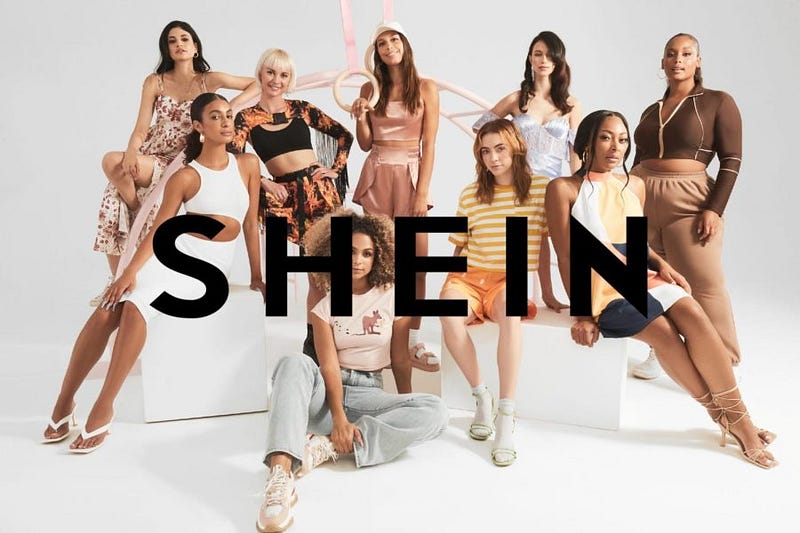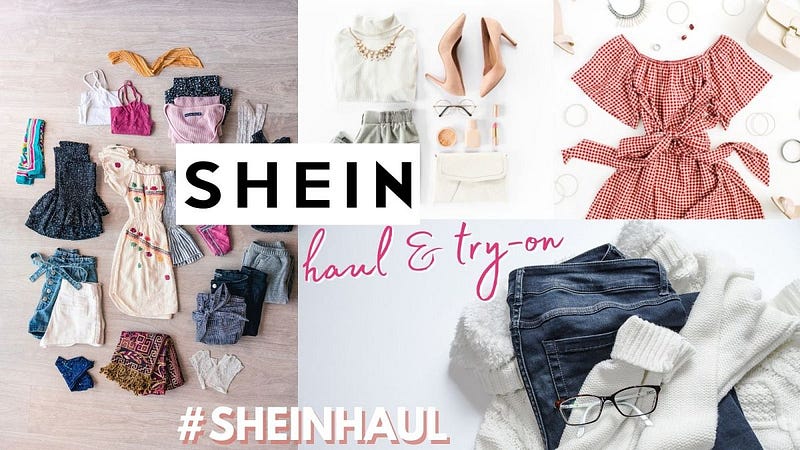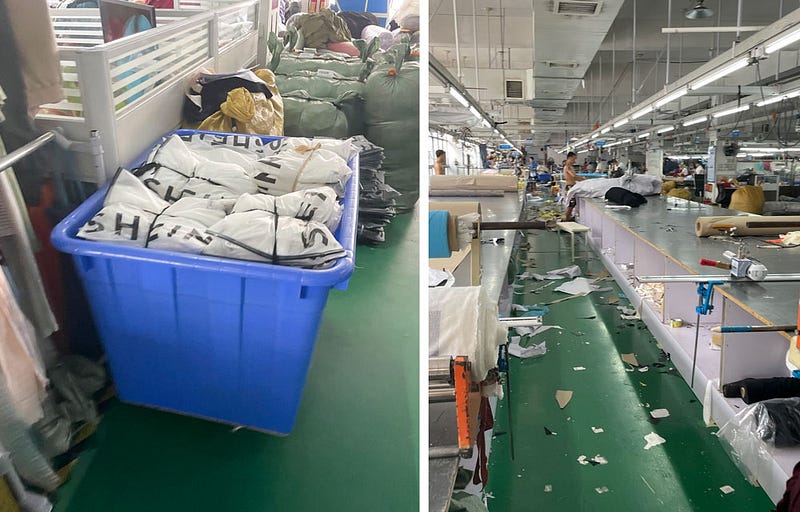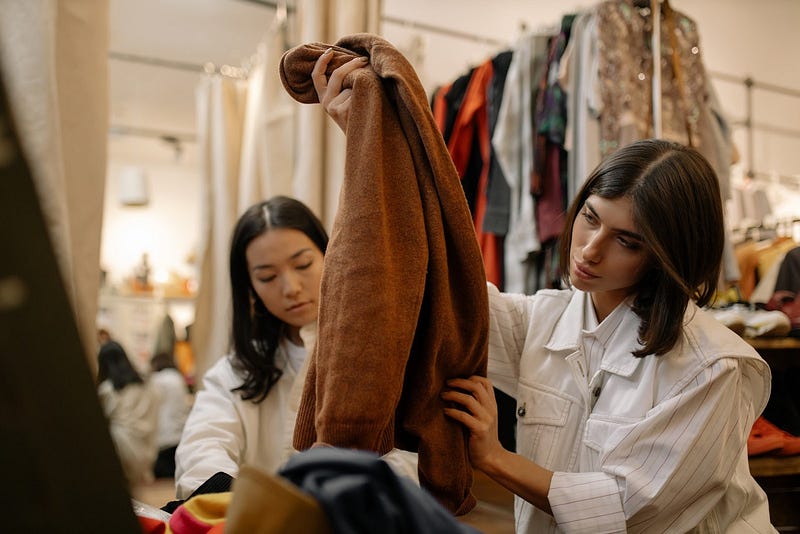Ultra Fast Fashion and the World of SHEIN
To grasp and understand fast fashion, its environmental impacts, and its history, be sure to check our first article covering this topic…
To grasp and understand fast fashion, its environmental impacts, and its history, be sure to check our first article covering this topic: Slowing Down Fast Fashion.
The Origins of SHEIN & Its Path to Fame
Founded by Chris Xu in 2008, Shein started off as a company named ZZKKO selling wedding dresses. The company then ventured into women’s clothing, changing their name to SheInside. In the early 2010s, the company began selling jewellery, shoes, purses, and cosmetics. By 2013, the company had about 100 employees, and improved its marketing strategies to become a fully integrated retailer, meaning the company had its own supply chain utilising a network of suppliers to produce their products. Finally, in 2015 the company changed its name once more to Shein, to be easier to remember and find.
With a completely virtual existence, the company has no physical retail stores like other major fashion brands such as Zara and H&M. So, how did this company become so popular? Shein advertises using Micro-Influencer marketing. This means that instead of relying on celebrity endorsements to market products, Shein uses influencers across social platforms like TikTok and Youtube to promote its services.
With over 177 million downloads and over 43.7 million users worldwide, the Chinese e-commerce company uses tactics to target the Gen-Z consumer base. A significant demographic for online shopping is Gen-Z, this means the company had to be creative with its advertising strategies. 55% of Gen-Z have stated that price is the most important factor when shopping for fashion, and with Shein’s untouchable low prices, the company has already won over a majority of the demographic.
As of writing this article, the #SheinHaul on TikTok has 8.1 billion views. These are viral videos of influencers and users showing off what they purchased from the company, practically creating a self running marketing campaign. With the desires of today’s young adults and teenagers to fit in and be spotted with the most trending outfits, Shein continues to have a choke hold on the fast fashion industry.
Another factor boosting Shein’s demand is the accelerated rates of e-commerce by Covid-19. As more people were stuck at home due to the virus, online shopping became the new normal. The lockdown period allowed Shein’s target audience to spend more time browsing and shopping online. This became the perfect opportunity for people to explore new brands, thus leading to the substantial rise of Shein. While other American fashion brands sales’s rates decreased by 20% in 2022, Shein’s sales rose by triple digits.
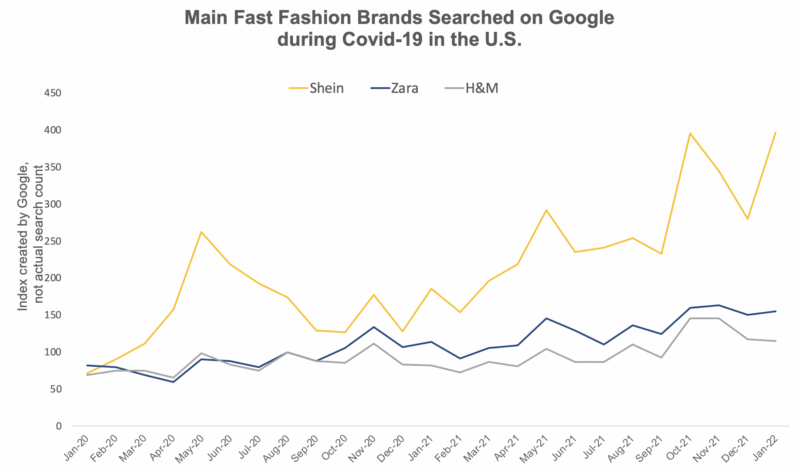
The Ultra-Fast Production of Shein
Regular fast fashion companies like Zara and H&M take around 2–3 weeks for a product to be designed, manufactured and distributed. However, Shein is able to complete this entire process in the span of a week.
Shein uses the “test and repeat” model made famous by Intedex (a multinational fast fashion clothing company with subsidiaries like Zara, Bershka and Pull&Bear) and H&M. This model commissions third party suppliers in China to produce small batches of clothing of around 50–100 pieces per item. If the item becomes popular, more of the item will be commissioned ; if not, the item is immediately discontinued.
Along with the “test and repeat” model, the secretive Guangzhou based company uses powerful algorithms to predict fashion trends. Sometimes the company doesn’t even begin manufacturing the product until an order has been placed. Shein has been known to release over 10,000 new items on their website a day. In comparison to Zara who releases 2,000 new items a month.
Another reason why Shein can effortlessly produce clothing is its lack of design integrity. The company has been seen countless times stealing from small creators and independent brands. This unethical unfair scheme allows Shein to produce a seemingly unique trendy item, while selling it at a much cheaper price due to the massive economics of scale.
In terms of manufacturing, Shein sends orders to factories dotted across China to produce its garments. Journalist Wu Peiyue was one of the few with the opportunity to tour inside these factories. “Many of Shein’s manufacturing suppliers cut costs by subcontracting orders to small workshops located inside rundown “handshake buildings” — residential blocks so densely packed together, locals joke that neighbours in different towers can almost touch each other.” Many of these workshops are illegal businesses who possess no legal contract with Shein, making it difficult to verify the treatment for the workers and the conditions they work in.
The workers involved in Shein’s factory production are not part of the social welfare system, meaning they have no rights or guarantees. Frequently filling the workforce with family members and temporary workers, workshop owners ensure that these individuals have fewer labour rights than permanent staff members — allowing bosses to avoid expensive social security payments.
Fashion and The Insatiable Consumerism of The World
Of course Shein is not the only one to be blamed for Ultra-fast fashion, they are merely suppliers feeding into the demand of the world. In today’s day and age fashion trends are zooming past us at a faster rate than ever. With our generation’s fear of missing out, a majority of us are unconsciously keeping up with the hundreds of thousands of trends and micro trends. With the help of social media, celebrities and influencers, standards as to what is deemed socially acceptable seem to change very quickly.
The 20-year cycle is a concept that in a period of 20 years, trends that were once popular will resurface again. However, with our rapid consumption and short attention spans, the cycle is being cut shorter and shorter. People used to pay close attention to runways, new collections and celebrities to know what the latest trends were. Now, with the power of social media and influencers, trendsetting is in their hands. These micro trends are moving so fast that items are staying in style for less than 6 months instead of years.
“The customer is thus the hamster trapped in their hyper-consumerism — their hunger knows no limits, and their appetite will never be satisfied. But what are we to tell that hamster? Will our moral conscience encourage us to dump our phones or get rid of all social media?”
“The Insatiable Consumer” by Naama Simon
Being so easily influenced by the latest trends in circulation we continue to consume more and more. In the desperate need to fit in and burn holes through our wallets, we turn to companies like Shein who can fulfil our needs quickly and cheaply. But fashion should be circular and sustainable, so how do we help?
Avoiding Fast Fashion
As consumers we have a responsibility to consume sustainably and ethically for the future of our planet.
The first step in avoiding fast fashion is to educate yourself. It is beneficial to know what brands contribute to fast fashion and are more ethical and sustainable, as well as purchasing good quality items to last in the long run sourced from transparent companies. Local and small brands are a great place to start.
Next is changing your shopping habits. Though it may be difficult to not give into the latest trends, we should aim to make more mindful choices with our purchases. Thrift stores and second hand items are a great way to explore new styles while also giving clothes a second chance at life.
Another way to avoid fast fashion is to shop in your own closet! I am sure many of us have clothes we haven’t worn in ages, just sitting in the back of our dressers collecting dust. Instead of simply throwing them out, donating clothing to reliable sources or reusing the fabric to make tote bags is a Jurassic improvement.
The change of unsustainable practices of Fast Fashion starts with us consumers, together we can make fashion circular, ethical, and sustainable.
[Written by: Nurrania Alfian. Edited by: Teoh Jin]


